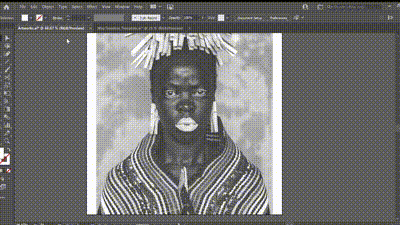How to Read this Book & Land Acknowledgement
As an open educational resource developed originally for the University of Texas at Arlington (UTA), we developed this book with the ethics of inclusivity at the front of our minds. As an art history text, we also focus on accurate historical context. Thus, at the outset, we acknowledge that UTA is located on Native American lands. The UTA Land Acknowledgement Task Force constructed the following statement.
The University of Texas at Arlington respectfully acknowledges the Wichita and Affiliated Tribes upon whose historical homelands the university is located. Their ancestors resided here for generations before being violently displaced by US settlers and soldiers in the mid-1800s CE. We recognize the historical presence of the Caddo Nation and other Tribal Nations in the region, the ongoing presence and achievement of many people who moved to the area due to the Indian Relocation program of the 1950s and 1960s CE, and the vital presence and accomplishments of our Native students, faculty, and staff.
How to Read this Book
You’ve probably noticed that this book is made up of a ton of questions. The title is a question and all chapters are focused on questions. We will explore these questions as they relate to your life and to art history. Thus, this isn’t a chronologically or geographically organized art history textbook. We’ll talk about why we choose not to take that traditional approach in “Where Does Art Come From? An Introduction.”
In addition, unlike most art history textbooks, we wrote this book in a conversational tone, with the hope of making you smile or LOL (laugh out loud) at some point. Mostly, we wrote informally to ensure this text is readable and enjoyable for everyone. In addition to LOL, you’ll see informal abbreviations like P.S. (postscript), aka (also known as), btw (by the way), FYI (for your information), and tbh (to be honest). If you aren’t familiar with those abbreviations, just come back here to see what they mean. We periodically announce ‘SPOILERS’ as well, especially when we talk about recent films but also when we foreshadow what’s to come in later chapters. FYI: We’ll also include some videos with content warnings to reduce any triggers.
Importantly, while the writing style of this textbook is intentionally informal, we expect students to practice formal, academic writing. There are models of academic writing embedded throughout the text, including scholarly books and articles, as well as example student papers linked to chapters. Look beyond this text at those resources to ensure you understand the difference between conversations about art that facilitate learning and demonstrations of your learning according to academic standards.
Also, this conversation is not one-sided! You have a voice! This is a digital text and easily editable. Students should suggest changes and additions. BTW, this is something that students and scholars are supposed to do! We find the gaps and inaccuracies and work to fill or correct them as best we can! In fact, students who develop excellent research papers and projects will be invited to submit their work as part of this text! You’ll see examples already embedded in the text, including a comic written and illustrated by Emery Martinez-Blas, a UTA art student! And, the graphic designer of many illustrations, Marizela Garza, is a UTA art student! You’ll see her work in every chapter! Further, UTA art student and athlete, Simona Cabella, designed the book cover here!
Speaking of Marizela’s work, we hope it helps you navigate all the artworks, geography, and time periods discussed in the book. In “Where Are We Going?”, we’ll discuss the geography you need to know to get started. Marizela’s maps in that chapter will get you situated before diving into all the artworks! Then, each chapter starting with “Who Am I?” begins with a specifically designed map featuring the artworks in that chapter, as well as a timeline visualizing how those artworks relate chronologically.
We chose all artworks discussed in the book carefully. They relate to the questions and offer perspectives or approaches that aren’t necessarily well-known or well-understood. Because of this, it is important to thoroughly contextualize every artwork, so you know exactly who, when, and where it comes from (as far as we can know with current scholarship), and where it is now. That info is summed up in artwork captions below each image, following the art history standard Chicago Manual of Style format:
Some artworks (and/or images of them) have copyright restrictions, so we could not include photographs of them in the text. They are so important to the topics discussed that we couldn’t leave them out. So, Marizela developed transformational sketches of these artworks. Check out Marizela’s amazing sketches and the original artworks through links provided in their captions. To give you a sense of how these transformational sketches were created digitally, Marizela screencasted her work! Figure 0.1 below demonstrates Marizela’s work on the sketch of Bester I, Mayotte (Fig. 5.7) by South African artist Zanele Muholi. Check out all those clothes pins! View all the sketching time lapses here.

A few notes about dates in captions and in the text:
- We don’t use the BC/AD dating convention, which abbreviates the phrases “Before Christ” and Anno Domini (Latin for “in the year of our Lord”). That convention assumes Christian structures of thought and chronology. Instead, we use the BCE/CE convention, which abbreviates “Before Common Era” and “Common Era.” BC and BCE dates are the same numerically. But the BCE label does not presuppose Christian relevance. Thus, it is much more appropriate when discussing cultural traditions that do not see Christianity as relevant to their belief structures.
- You’ll see BCE or CE after every date mentioned in the text. This may feel redundant but it is important to ensure that everyone understands when events occurred. BCE/CE will not be included in bibliographic references since almost all sources were published in the Common Era. But there are exceptions, so if you are confused, make sure to ask.
- Labels like ‘ancient,’ ‘traditional,’ ‘historical,’ ‘modern,’ and ‘contemporary’ are used to separate time periods but can be a bit confusing. Generally speaking:
- ‘Ancient’ refers to periods prior to the development of writing and/or a cultural period that is contrasted to a more recent period (like the ancient Maya versus the historic or modern Maya).
- ‘Traditional’ is problematic because it often comes with a value judgment that something is not ‘modern’ (see discussion below; meaning new, sophisticated, or ‘civilized’) but old-fashioned or dependent on cultural belief. We try to avoid this term but when we use it, we refer to practices or arts that are long-established and important to a particular group.
- ‘Historical’ usually refers to periods after the development of writing but more recent than ‘ancient’ periods.
- ‘Modern’ is malleable. In formal art history, it was a period of art starting in the late 1800s CE that challenged the long-held focus on realism in art (see “Where Does Art Come From? An Introduction”). When used in that sense, we’ll capitalize the term for clarity. Generally, ‘modern’ (lowercase) can refer to recent times. To add to the confusion, ‘modern’ and ‘contemporary’ are often used interchangeably.
- ‘Contemporary’ refers to artists making art right now and to the developments of Postmodernism starting in the 1960s CE (see “Where Does Art Come From? An Introduction”).
Getting back to Chicago Manual of Style… unlike many textbooks, this book will include in-text citations (directly in the sentences) to credit information sources. Textbooks usually don’t include citations because they can hinder readability, especially for introductory audiences. But, we’ve decided that we want our readers to be informed about sources. We don’t cite every single source but we offer key resources and we cite every quotation to model ethical writing practices and help you start your own research. For academic writing, you must cite ALL sources of information, including those you have paraphrased and quoted.
Typically, art historians use the Chicago Manual of Style Notes and Bibliography (footnotes) substyle. As a digital text, it was difficult to include footnotes here so we chose to use the Chicago Manual of Style Author-Date substyle, which uses parenthetical in-text citations (not footnotes). FYI: Chicago Author-Date citations appear similar to MLA citations BUT THEY ARE DIFFERENT! There are many ways to cite your sources in academic writing. It is crucial that you follow the specific assignment instructions, including Manual of Style expectations.
The Wrap-up
Every chapter ends with “The Wrap-Up” to summarize and conclude things. Then, you’ll see a section called “News Flash” highlighting social media, movies, television, and games that relate to the traditions and arts discussed in each chapter. If you don’t see something that you’ve found on your own, send it in as a recommendation! Lastly, there will be a “Where Do I Go From Here?” section that acts both as a bibliography for in-text citations and as a list for recommended reading to learn more. You can use these bibliographies to begin research for your essays and projects! You’re Welcome!!
 P.S. Can you find all the drawings by Vy, a UTA student in spring 2022? Look for Vy’s signature above this kitty!
P.S. Can you find all the drawings by Vy, a UTA student in spring 2022? Look for Vy’s signature above this kitty!
If you find all 16 drawings after this one, let your instructor know to claim a prize!

